Will AI Take Over Marketing Jobs?
Artificial Intelligence (AI) has been rapidly advancing in recent years, leading to questions about its potential impact on various industries. One area that is particularly concerned about this technological advancement is marketing. As AI is increasingly used in marketing tasks, there is speculation about whether AI will eventually replace human marketers. In this article, we will explore the current state of AI in marketing and discuss its potential implications for marketing jobs.
Key Takeaways
- AI is transforming the marketing landscape by automating repetitive tasks and providing valuable insights.
- AI may not completely replace human marketers but is expected to augment their skills and improve efficiency.
- Marketers should embrace AI as a tool to enhance their work rather than fear it as a threat to their jobs.
The Rise of AI in Marketing
AI has become increasingly prevalent in marketing, with many companies incorporating AI-powered tools into their strategies. These tools enable marketers to automate repetitive tasks, such as data analysis, content creation, and social media management. By leveraging AI, marketers can save time and focus on more strategic activities that require human creativity and critical thinking.
*AI allows marketers to analyze vast amounts of data quickly and effectively, providing valuable insights to inform decision-making processes.*
Implications for Marketing Jobs
While AI automates certain tasks and streamlines processes, it is important to note that it cannot completely replace human marketers. The human touch is still crucial in building relationships, understanding customer needs, and developing creative marketing campaigns. However, AI can supplement and enhance these skills:
- AI algorithms can identify patterns and trends in consumer behavior, helping marketers make data-driven decisions.
- AI-powered chatbots provide personalized customer support and engagement.
- AI can analyze large sets of customer data to deliver targeted and relevant marketing messages.
With AI handling the routine tasks, marketers have more time to focus on strategy, creativity, and building meaningful connections with their target audience.
*Marketers who embrace AI as a tool for efficiency and innovation will have a competitive advantage in the evolving digital landscape.*
Data on AI Adoption in Marketing
| Year | Percentage of Companies Using AI in Marketing |
|---|---|
| 2018 | 22% |
| 2019 | 29% |
| 2020 | 37% |
Benefits and Challenges of AI in Marketing
While AI brings numerous benefits to the field of marketing, there are also challenges to consider. Here are some of the advantages and potential hurdles:
- Benefits of AI:
- Improved efficiency and time savings
- Enhanced personalization and targeting
- Data-driven insights for decision-making
- Challenges of AI:
- Ensuring data privacy and security
- Adapting to rapid technological advancements
- Addressing ethical considerations surrounding AI use in marketing
Conclusion
In conclusion, AI is transforming the marketing industry by automating repetitive tasks, providing valuable insights, and improving efficiency. While AI adoption in marketing continues to rise, it is important to recognize that AI will not entirely replace human marketers. Instead, it will augment their skills and enable them to focus on more strategic and creative aspects of their work. By embracing AI as a tool for innovation, marketers can stay ahead in the rapidly evolving digital landscape.

Common Misconceptions
Misconception 1: AI will completely replace human marketers
There is a common misconception that artificial intelligence (AI) will completely replace human marketers in the future. However, this is not entirely true. While AI technology has the potential to automate certain marketing tasks and improve efficiencies, it cannot replicate the creativity, empathy, and strategic thinking that human marketers bring to the table.
- AI can assist in data analysis and provide insights into customer behavior and preferences.
- Human marketers have the ability to understand emotions and build connections with customers.
- Creative thinking and intuitive decision-making are skills that cannot be replicated by AI.
Misconception 2: AI will eliminate the need for human interaction in marketing
Another misconception is that AI will eliminate the need for human interaction in marketing. While AI can automate certain processes, marketing is ultimately about building relationships and connecting with customers. Human interaction is essential to understand the nuances of customer needs, provide personalized experiences, and build brand loyalty.
- Human marketers can build personal connections and trust, which is important for long-term customer relationships.
- Understanding customer preferences and adapting marketing strategies requires human intuition and empathy.
- AI can complement human interaction by providing data-driven insights and streamlining certain processes.
Misconception 3: AI will make marketing decisions without human input
One common misconception is that AI will make marketing decisions without any human input. While AI algorithms can analyze vast amounts of data and recommend actions, human oversight and input are crucial in ensuring that decisions align with business goals and brand values.
- Human marketers possess domain expertise and can validate the decisions made by AI algorithms.
- Critical thinking and creative problem-solving are important skills that humans contribute to decision-making.
- AI can support decision-making by providing data-driven insights and recommendations.
Misconception 4: AI will instantly deliver perfect results in marketing campaigns
It is a misconception that AI will instantly deliver perfect results in marketing campaigns. While AI can optimize marketing efforts based on data and predictive algorithms, it requires continuous monitoring, tweaking, and human oversight to ensure its effectiveness. Success in marketing campaigns involves a combination of data-driven strategies, human insights, and ongoing experimentation.
- Human marketers play a key role in interpreting AI-generated insights and adapting marketing strategies accordingly.
- Testing and experimentation are essential to refine marketing campaigns and improve results.
Misconception 5: AI will lead to widespread unemployment among marketers
There is a misconception that AI will lead to widespread unemployment among marketers. While AI may eliminate certain repetitive and low-level tasks, it also creates new opportunities and demands new skills. Rather than replacing human marketers, AI technology is likely to change the nature of marketing jobs, requiring marketers to adapt, upskill, and focus on higher-level strategic initiatives.
- AI will create new roles and job opportunities in areas such as AI strategy, data analysis, and AI-powered marketing tools.
- Human marketers can focus on more creative and strategic aspects of marketing, leveraging AI as a tool to enhance their work.
- Collaboration between AI technology and human marketers can lead to improved marketing outcomes.

Robotic Process Automation (RPA) vs. Traditional Marketing Task Execution
In order to understand the potential impact of AI on marketing jobs, it is important to compare the efficiency and accuracy of AI-driven robotic process automation (RPA) with the traditional execution of various marketing tasks. The following table highlights some key differences:
| Task | Traditional Execution | AI-Driven RPA |
| — | — | — |
| Market Research | Manual data collection and analysis, time-consuming and prone to errors | Automated data scraping and analysis, faster and more accurate |
| Customer Segmentation | Manual analysis based on limited data, subjective decision-making | Automated analysis of vast amounts of data, objective decision-making |
| Social Media Management | Manual scheduling and posting of content, limited reach and engagement | Automated content creation, scheduling, and monitoring, broader reach and better engagement |
| Email Marketing Campaigns | Manual creation and sending of emails, time-consuming and repetitive | Automated creation, personalization, and sending of emails, improved efficiency and personalization |
| Lead Generation | Manual lead sourcing, verification, and tracking, inconsistent results | Automated lead sourcing, verification, and tracking, consistent and reliable results |
| Data Analysis | Manual analysis of limited data, time-consuming and prone to bias | Automated analysis of big data sets, faster and unbiased results |
| A/B Testing | Manual creation and management of test campaigns, limited insights | Automated creation and management of multiple test campaigns, detailed insights and recommendations |
| Content Optimization | Manual identification and implementation of optimization strategies, based on guesswork | Automated analysis and implementation of best practices, data-driven optimization |
| Campaign Performance Tracking | Manual data tracking and analysis, delayed and incomplete reports | Real-time automated tracking and analysis, detailed and accurate reports |
| Customer Support | Manual customer inquiries management, limited response time and availability | Automated chatbots and AI-powered customer support solutions, instant and available 24/7 |
AI-Enhanced Decision Making in Marketing
One of the key advantages of AI in marketing is its ability to enhance decision-making processes. The following table explores how AI aids decision-making compared to traditional methods:
| Decision-Making Aspect | Traditional Method | AI-Enhanced Method |
| — | — | — |
| Data Analysis | Relies on manual analysis of limited data, prone to bias and errors | Automates analysis of big data sets, provides objective and insightful recommendations |
| Personalization | Relies on manual segmentation and personalization, limited scope and effectiveness | Uses AI algorithms to analyze customer behavior and preferences, enables hyper-personalized recommendations and marketing messages |
| Pricing Strategy | Based on guesswork and competitor analysis, lacks accuracy and optimization | Utilizes AI algorithms to analyze market trends, customer behavior, and competitor data, enables dynamic pricing and optimal revenue maximization |
| Marketing Budget Allocation | Decided based on previous experience and intuition, lacks data-driven insights | Uses AI algorithms to analyze historical data, market trends, and customer behavior, provides predictive insights for optimized budget allocation |
| Campaign Optimization | Depends on manual adjustments and iterations, time-consuming and inefficient | Utilizes AI algorithms to analyze real-time data, automatically adjusts campaigns for optimal performance, saves time and resources |
| Customer Journey Mapping | Employs manual analysis and mapping, prone to oversights and gaps | Utilizes AI algorithms to analyze vast amounts of customer data, identifies gaps and provides seamless customer journey mapping |
| Risk Management | Relies on human judgment and experience, can be subjective and limited | Leverages AI algorithms to analyze potential risks, provides real-time monitoring and proactive risk management |
| Competitor Analysis | Involves manual data collection and analysis, prone to biases and incomplete data | Automates data scraping and analysis, provides comprehensive and accurate competitor insights |
| Market Trend Identification | Relies on manual market research and analysis, susceptible to errors and outdated information | Utilizes AI algorithms to analyze real-time market data, identifies trends and predicts future market developments |
| Customer Lifetime Value (CLV) Optimization | Based on manual calculations and projections, lacks accuracy and granularity | Utilizes AI algorithms to analyze historical customer data, predicts CLV more accurately, enables personalized marketing strategies for higher CLV |
The Evolution of AI in Digital Advertising
AI has transformed various aspects of digital advertising, leading to greater efficiency and improved performance. The following table illustrates the key changes brought about by AI in digital advertising:
| Aspect | Traditional Advertising | AI-Enhanced Advertising |
| — | — | — |
| Ad Placement | Manual selection and bid optimization, limited targeting options | Automated placement and bid optimization based on real-time data, precise targeting options |
| Ad Creatives | Manual design and content creation, limited personalization | Automated design and content generation, dynamic personalization based on user preferences |
| Ad Performance Prediction | Relies on historical data analysis and intuition, limited accuracy | Uses AI algorithms to analyze real-time data and historical performance, predicts ad performance more accurately |
| Fraud Detection | Manual analysis of suspicious activities, delayed detection and response | Utilizes AI algorithms to analyze patterns and detect anomalies, enables real-time fraud detection and prevention |
| User Behavior Analysis | Relies on manual analysis and limited data, time-consuming and subjective | Utilizes AI algorithms to analyze vast amounts of user data, provides granular insights into user behavior |
| Ad Campaign Optimization | Manual adjustments and iterations, prone to human errors and biases | Utilizes AI algorithms to analyze real-time campaign data, automatically adjusts campaigns for optimal performance |
| Ad Budget Optimization | Based on historical performance and intuition, lacks data-driven insights | Uses AI algorithms to analyze budget allocation and ad performance data, maximizes returns on ad spend |
| Ad Pricing Models | Relies on fixed pricing models, limited flexibility and personalization | Utilizes AI algorithms to analyze market dynamics and customer behavior, enables dynamic and personalized pricing models |
| Ad Targeting | Relies on basic demographic and interest targeting, limited precision | Uses AI algorithms to analyze user behavior, preferences, and contextual data, enables more precise and effective ad targeting |
| Ad Recommendation Systems | Relies on manual selection and limited personalization, lacks accuracy | Utilizes AI algorithms to analyze user data, provides personalized and relevant ad recommendations |
The Role of AI in Content Marketing
AI has revolutionized content marketing by enabling automation and enhancing creativity. The following table showcases the different roles played by AI in content marketing:
| Role | Traditional Content Marketing | AI-Enhanced Content Marketing |
| — | — | — |
| Content Creation | Relies on manual research and writing, time-consuming and limited scale | Utilizes AI algorithms to generate content, based on user preferences and data analysis, saves time and enables large-scale production |
| Content Curation | Manual collection and organization of curated content, limited scope and efficiency | Utilizes AI algorithms to automate content discovery and curation, provides relevant content suggestions based on user preferences |
| SEO Optimization | Manual keyword research and optimization, limited efficiency and accuracy | Utilizes AI algorithms to analyze search trends and competition, provides data-driven SEO recommendations for better ranking |
| Content Distribution | Relies on manual scheduling and promotion, limited reach and audience targeting | Utilizes AI algorithms to automate content distribution and social media posting, targets specific audience segments and maximizes reach |
| Content Performance Tracking | Manual tracking and analysis of content performance, time-consuming and incomplete | Utilizes AI algorithms to automate tracking and analyze content performance, provides detailed insights and recommendations for improved content strategy |
| Language Translation | Manual translation, prone to errors and inconsistencies | Utilizes AI algorithms to automate translation, provides accurate and efficient translation for multilingual content marketing |
| Audience Analysis | Manual analysis of limited data, subjective understanding of audience preferences | Utilizes AI algorithms to analyze vast amounts of user data, provides granular insights into audience behavior, preferences, and demographics |
| Personalization | Limited personalization based on manual segmentation, lacks scalability | Utilizes AI algorithms to analyze user behavior and preferences, enables hyper-personalization at scale and improves user engagement |
| Content Strategy Planning | Relies on human judgment and limited data, lacks predictive insights | Utilizes AI algorithms to analyze market trends, user behavior, and competition, provides predictive insights for optimized content strategy |
| Content Recommendation Systems | Relies on manual selection and limited personalization, lacks accuracy | Utilizes AI algorithms to analyze user data and content preferences, provides personalized and relevant content recommendations |
AI-Powered Customer Service and Relationship Management
AI has significantly transformed customer service and relationship management in various industries. The following table examines the impact of AI on customer service:
| Aspect | Traditional Customer Service | AI-Powered Customer Service |
| — | — | — |
| Response Time | Relies on manual handling of customer inquiries, delayed response | Utilizes AI-powered chatbots for instant and round-the-clock customer support |
| Customer Query Analysis | Depends on manual analysis of limited data, slow identification of underlying issues | Utilizes AI algorithms to analyze customer queries, provides automated responses and quick resolution |
| CRM Integration | Limited integration and manual data entry, inconsistent customer information | Automates data integration with CRM systems, provides updated and consolidated customer data |
| Voice Recognition | Limited voice-based interactions, prone to errors and communication gaps | Utilizes AI-powered speech recognition for accurate voice-based interactions and smoother communication |
| Case Routing and Assignment | Manual routing and assignment of customer inquiries, prone to human errors | Uses AI algorithms to automate case routing and assignment, ensures faster and more efficient handling |
| Sentiment Analysis | Relies on manual analysis of customer feedback, subjective and limited insights | Utilizes AI algorithms to analyze customer sentiment, provides objective and comprehensive insights for improved customer experience |
| Self-Service Options | Limited self-service options, higher dependency on customer support | Implements AI-powered self-service solutions, enables customers to find answers and resolve issues independently |
| Predictive Support | Limited ability to anticipate customer needs and proactively address issues | Utilizes AI algorithms to analyze customer data and behavior, provides proactive support and personalized recommendations |
| Customer Feedback Analysis | Manual analysis of customer feedback, time-consuming and inconsistent | Utilizes AI algorithms to analyze customer feedback at scale, provides insights into customer preferences and areas for improvement |
| Support Ticket Automation | Manual handling and resolution of support tickets, higher response time | Automates ticket handling and resolution, streamlines support operations and reduces response time |
The Advent of AI in Influencer Marketing
AI has revolutionized the realm of influencer marketing by enabling more efficient collaborations and better campaign outcomes. The following table showcases the different applications of AI in influencer marketing:
| Application | Traditional Influencer Marketing | AI-Enhanced Influencer Marketing |
| — | — | — |
| Influencer Discovery | Manual research and identification, time-consuming and subjective | Utilizes AI-powered algorithms to analyze data and identify relevant influencers based on audience demographics, engagement metrics, and relevance |
| Influencer Screening | Manual evaluation and verification, limited insights and potential risks | Utilizes AI algorithms to analyze influencers’ past performance, audience authenticity, and potential risks, provides comprehensive insights for informed decision-making |
| Campaign Management | Manual coordination and communication, potential misalignment and delays | Utilizes AI-powered platforms to streamline collaboration and automate campaign management, ensures smooth communication and efficient workflows |
| Audience Analysis | Relies on manual analysis of limited data, subjective understanding of audience preferences | Utilizes AI algorithms to analyze vast amounts of user data, provides granular insights into influencer audience behavior, preferences, and demographics |
| Performance Metrics | Relies on manual monitoring and analysis of limited data, time-consuming and incomplete | Utilizes AI-powered platforms to automate performance tracking, provides real-time insights and comprehensive reports on campaign reach, engagement, and conversions |
| Fraud Detection | Manual detection of fake followers and engagement, prone to human errors and biases | Utilizes AI algorithms to analyze influencers’ audience authenticity and engagement patterns, provides real-time fraud detection and prevention |
| Campaign Impact Analysis | Relies on manual analysis of limited data, subjective evaluation of ROI | Utilizes AI-powered platforms to analyze campaign impact on brand sentiment, website traffic, conversions, and revenue, provides data-driven insights to measure ROI |
| Contract Negotiation | Manual negotiation and agreement, potential inconsistencies and delays | Utilizes AI-powered platforms to automate contract negotiation and agreement, ensures standardized and efficient collaborations |
| Campaign Optimization | Manual adjustments and iterations, prone to human errors and biases | Utilizes AI algorithms to analyze real-time campaign data, provides automated recommendations for optimizing campaign performance |
| Influencer Relations | Relies on manual relationship management, potential communication gaps and misalignment | Utilizes AI-powered platforms to streamline influencer communication and relationship management, ensures smooth collaborations and improved outcomes |
AI in Market Research: Improving Insights and Decision Making
AI-powered market research has significantly enhanced the quality and reliability of insights, leading to better decision-making. The following table highlights the advantages of AI in market research:
| Aspect | Traditional Market Research | AI-Powered Market Research |
| — | — | — |
| Data Collection | Manual collection, time-consuming and limited in scope | Automated collection from various sources, broader and more comprehensive data coverage |
| Data Validation | Manual verification, prone to errors and incomplete validation | Uses AI algorithms to validate and cross-check data, ensures accuracy and completeness |
| Data Analysis | Relies on manual analysis, time-consuming and prone to biases | Utilizes AI algorithms to perform automated analysis of large data sets, eliminates biases and provides objective insights |
| Real-Time Insights | Delayed data analysis and insights, limited speed in decision-making | Provides real-time insights through AI algorithms, enables faster decision-making and timely actions |
| Text Analysis | Relies on manual analysis of limited data, subjective interpretation | Utilizes AI-driven natural language processing (NLP) for automated text analysis, generates structured insights and sentiment analysis |
| Predictive Analytics | Limited ability to predict market trends and customer behavior | Utilizes AI algorithms for predictive analytics, enables accurate forecasting and proactive decision-making |
| Competitive Analysis | Manual analysis of competitors, prone to incomplete data and biases | Uses AI algorithms to analyze vast amounts of competitor data, delivers comprehensive and accurate competitive insights |
| Market Segmentation | Manual segmentation based on limited data, subjective decision-making | Uses AI algorithms to analyze customer data and behavior, enables precise and objective market segmentation |
| Brand Perception Analysis | Highly subjective and anecdotal data collection, lacks objectivity | Leverages AI algorithms to analyze sentiment and perception data at scale, delivers comprehensive and data-driven brand perception insights |
| Visualization and Reporting | Relies on manual creation and aggregation, time-consuming and potentially inconsistent | Uses AI-powered tools to automate visualization and reporting, ensures standardized and efficient generation of reports |
Impact of AI on Market Analysts and Researchers
AI has transformed the role of market analysts and researchers, leading to a shift in responsibilities and tasks. The following table highlights the changes observed:
| Aspect | Traditional Market Analysts/Researchers | AI-Driven Market Analysts/Researchers |
| — | — | — |
| Data Collection | Manual collection and entry, time-consuming and potentially error-prone | Relies on AI-driven tools to automate data collection, saves time and eliminates errors |
| Data Analysis | Manual analysis, limited data coverage and potentially biased insights | Utilizes AI algorithms for automated data analysis, provides comprehensive and objective insights |
| Report Generation | Manual report creation and formatting, time-consuming and inconsistent | Utilizes AI-powered tools to automate report generation, ensures standardized and efficient reports |
| Predictive Analytics | Limited ability to forecast market trends and customer behavior | Utilizes AI algorithms for predictive analytics, enables accurate and timely forecasts |
| Market Insights | Relies on manual analysis and intuition, delays in providing insights | Utilizes AI algorithms for real-time market analysis, delivers timely and data-driven insights |
| Competitive Analysis | Manual analysis of competitors, prone to incomplete data and biases | Relies on AI algorithms for comprehensive and accurate competitive analysis |
| Automation of Repetitive Tasks | Limited automation, higher focus on manual analysis | Utilizes AI-powered tools to automate repetitive tasks, saving time for higher-value analysis |
| Data Visualization | Manual creation and formatting of visualizations, time-consuming and inflexible | Uses AI-powered tools to automate data visualization, ensures interactive and dynamic visual representations |
| Collaboration and Teamwork | Limited collaboration due to manual data handling, potential silos | Enhances collaboration through AI-powered platforms, facilitates seamless sharing and analysis of data |
| Skill Set Requirements | Emphasizes manual analysis skills, potentially limited technical expertise | Requires proficiency in AI tools and algorithms, combines analytical and technical skills |
Conclusion
The rise of AI in marketing has brought about a significant transformation in various areas, including task execution, decision-making, customer service, content marketing, digital advertising, influencer marketing, and market research. By leveraging AI-driven technologies, marketers gain access to more efficient and accurate tools that enable enhanced personalization, optimization, and insights. While AI may change the roles and responsibilities of market analysts and researchers, it also opens up new opportunities for leveraging advanced technologies to generate deep insights and make data-driven decisions. Overall, the integration of AI into marketing processes holds the potential to revolutionize the industry, but it also emphasizes the importance of human expertise and strategic thinking to maximize the benefits of AI-powered solutions.
Frequently Asked Questions
Will AI Take Over Marketing Jobs?




